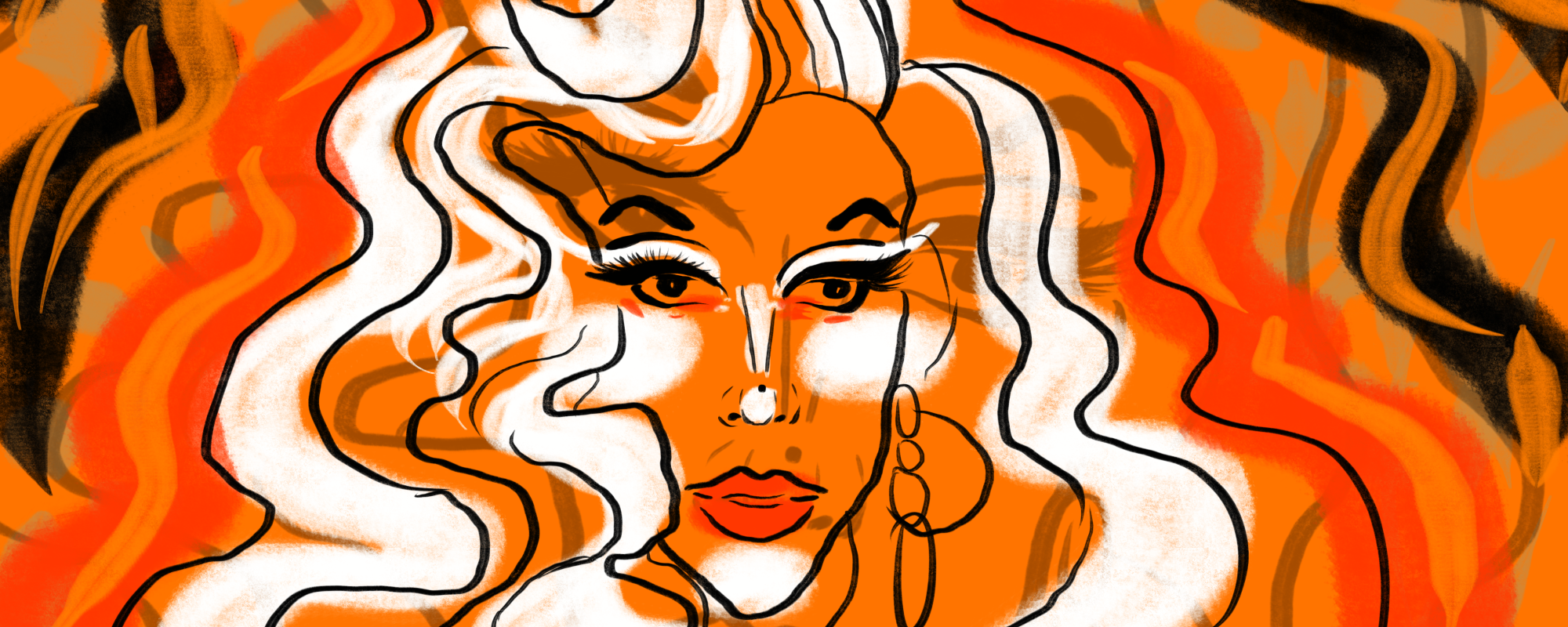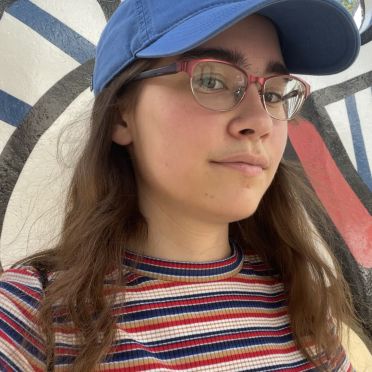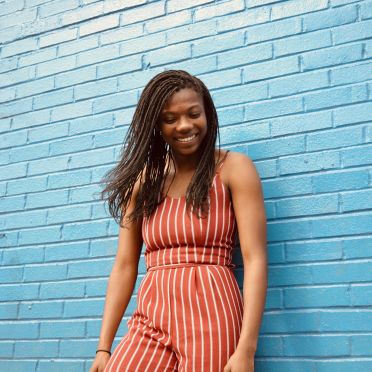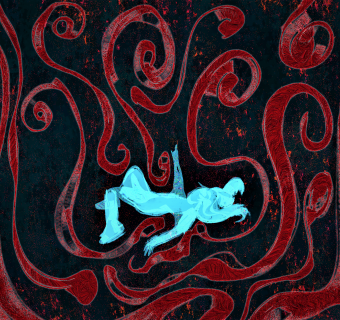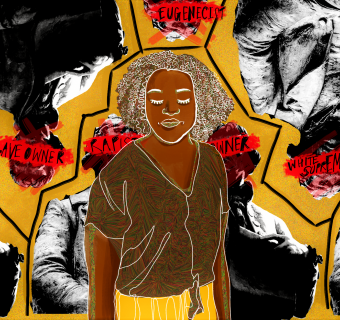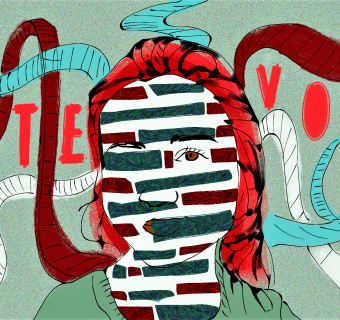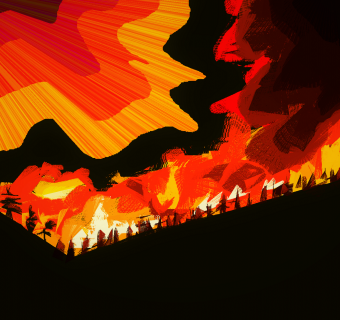Halloween is a holiday that feels intrinsically queer. It is a celebration of the “weird” and untraditional. It is an embrace of all things camp and taboo. For those questioning and in the closet, the guise of costume brings with it the freedom to explore authentic expression. For those of us who are out, it is a day where we can unmask and celebrate the blurring of the gender binary.
Halloween is, for many, a high holy day of queerness.
But how did we get here?
It’s October 31st, 1962, and you’re strutting down Broad Street in Center City, threading through throngs of elegantly dressed queens decked out in extravagant displays of opulent femininity. You yourself are in drag—deep plum gown, mink coat, pin up brunette wig, multiple strings of pearls of varying lengths.
This is Gay Christmas and costume is your messiah.
You planned your outfit for weeks, walked up to the Fashion District to buy yards of organza and satin in just the right shades and found a tailor in Rittenhouse willing to look the other way. You spent the whole morning getting ready—setting your wig, shoving your feet into too-small pumps, pinning your dress, so that it fell perfectly against your frame.
Gay Christmas, or bitches Christmas, was a queer Halloween parade born in Philadelphia in the 1950s, in response to the Lavender Scare. As the anticommunist rhetoric of the Second Red Scare opened the door for moral panics about queerness and cross dressing, homosexuality was deemed a national security threat. President Eisenhower banned homosexuals from working in the federal government, the postal service was given the right to go through mail and created lists of gay men based on their subscription histories, and police raids on gay bars and clubs were frequent and often violent.
You wink at onlookers, bumping shoulders with the queens next to you. Each moment of contact reminds you that you are not alone.
Most states and cities banned cross-dressing, making drag and gender non-conforming expression illegal. Governmental violence, harassment and hate crimes, and employment and housing discrimination were rampant. It was only on Halloween that cross-dressing was considered chic, rather than criminal.
Surrounded by over a hundred queens, you twirl down 13th, aware of the fact that you are being watched, as you always are, and reveling in the fact that tonight that realization doesn’t send shoots of fear down your spine and into your toes, and instead spreads a fierce warmth throughout your body. You wink at onlookers, bumping shoulders with the queens next to you. Each moment of contact reminds you that you are not alone.
You feel sexy. Confident. Ethereal. Gorgeous. Behind police barricades, mobs of spectators from across the city— masculine and feminine, gay and straight—press against the partition, cheering you on.
They are all here to revel in your beauty.
Crowds that skewed straight hailed from across the city, country, and, as international word spread of festivities, the world to cheer on the queens. Gay Christmas grew from a small promenade in the 1940s into a full-blown parade, and by the 1960s, crowds of thousands gathered to watch up to 200 queens perform. Philadelphia bars like the Pirate Ship, Allegro, Maxine, and Forrest, served as focal points for the parade, as drag performers bar hopped across central city, indulging in unrestricted queer expression.
Your dancing is frantic as a means of survival.
You arrive at 13th and Locust, where the Pirate Ship is pulsing, as if brought to life by sheer queer energy. Or perhaps you ride a limo down to South Street, where Black Gay Christmas celebrations are in full swing. Dressed lavishly in your organza ensemble, you dance and promenade from 3rd to 18th, as a small army of saxophonists croon melancholic blues and lively jazz.
Behind police barricades fans reach out for you, dressed to the nines in their finest outfits out of respect for the high-art of drag fashion. The crowds are so deep you can’t see where they end, but they all stare at you with adoration, even envy. It’s like Mardi Gras, all revelry and glamor, as you push your way into Peps or Showboat, where a queen with gardenias in her hair like Billie Holiday grabs your elbow, screams over the music that she “loves your dress,” and whisks you onto the dance floor.
Gay Christmas wasn’t isolated in the largely white queer community of Center City. Unlike the Locust Street parade, the South Street parade centered Black gay culture and performers. For Black queens, escape from the racism present in Philly’s white queer scene and the rampant homophobia that dominated South Philly’s Black community was a godsend. At the receiving end of flattery and fanfare rather than slurs and violence, queens danced in and out of bars—most popularly Nick’s, Pep’s, and Showboat—completely unmasked.
Your dancing is frantic as a means of survival.
Like Cinderella, you feel the threat of midnight, though the clock’s strike promises police batons instead of pumpkins. Tonight is your one night of freedom. Of royalty. The one night where the image of you in pumps feels like a perfect fit, instead of a death sentence. Whether you end up at the Pirate Ship or Peps, you let your skirt balloon around you like a halo. The darkness of the bar envelopes you like a womb. Surrounded by gay and trans foremothers, you let the tension in your shoulders begin to melt away.
There’s still time before the cruelness of day creeps in and you must put on your ill-fitting costumes.
Halloween’s status as a queer safe haven wasn’t relegated to Philly’s parades. In the 1960s and 70s, San Francisco’s Castro neighborhood became home to iconic gay bars like the Black Cat. On Halloween, Irish children’s festivals gave way to queer street parties, after demographic changes pushed Irish families into the suburbs.
In New York City, drag balls were hosted on Halloween as early as the 1920s, as Black LGBTQ+ individuals sought community and acceptance during the Harlem Renaissance. Sponsored by Black business owners, these celebrations spread to other major metropolitan areas, though Halloween celebrations were particularly popular in Chicago’s Southside. Drag balls were perhaps the most diverse and accepting of the queer Halloween celebrations, as racially integrated crowds and performers, both gay and lesbian, mixed and mingled in full drag, dancing together to live bands and sharing food and drink.
You dance with a tall blond in a black dress inspired by Hepburn. Every time she sips her drink, she kisses a ring of red onto the lip of her glass. She tells you that she wants to be crowned Queen of the Bar, and you joke that she doesn’t need to win the costume contest—she already has a tiara. Later that night, you stumble home together, not yet bothering to take off your dresses. There’s still time before the cruelness of day creeps in and you must put on your ill-fitting costumes.
Though “Gay Christmas” died out by the 1970s, Halloween remains a celebration of queer culture, community, and joy. Whatever your plans are this Halloween, take notes from queer icons of yore and use this holiday as an opportunity to express yourself authentically and with pride!

